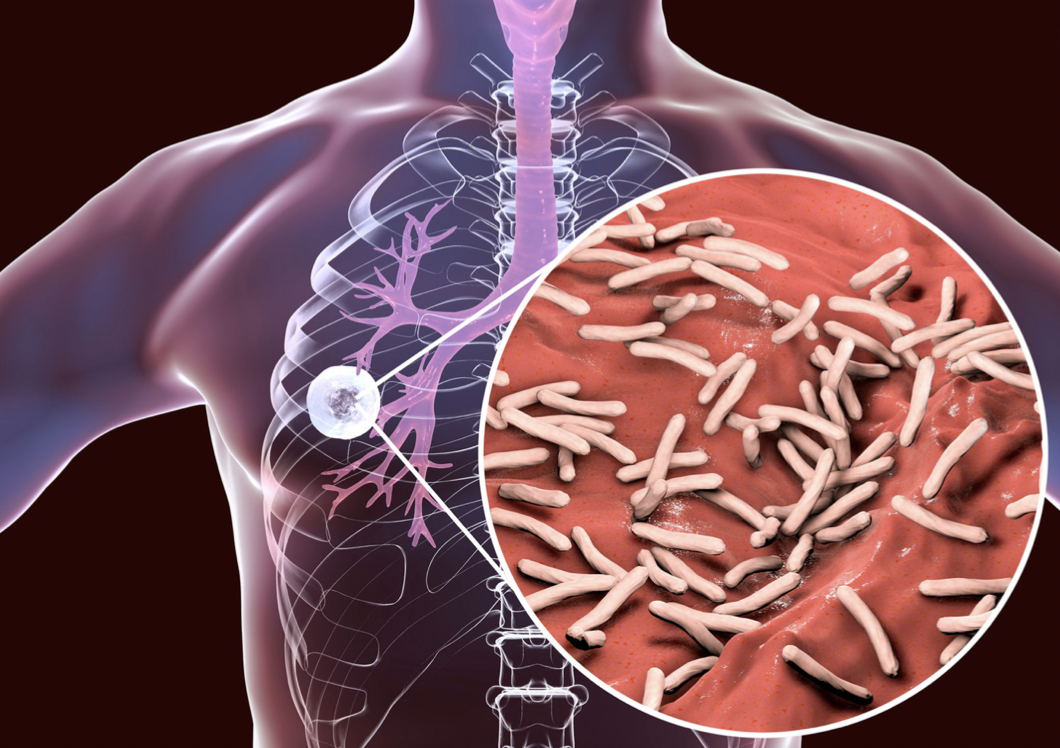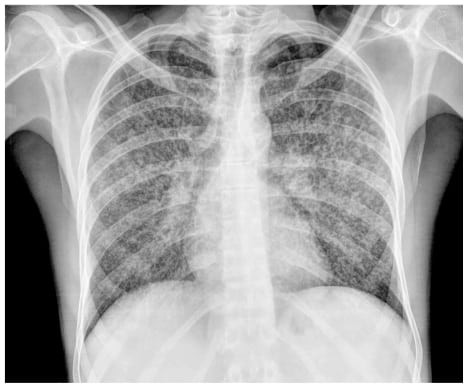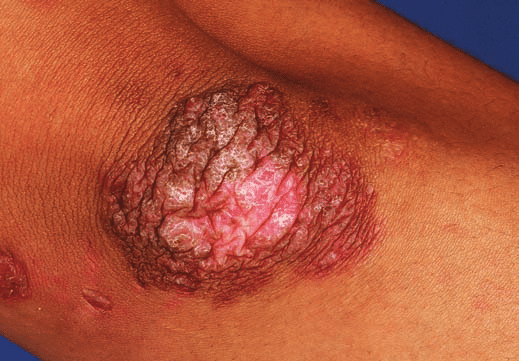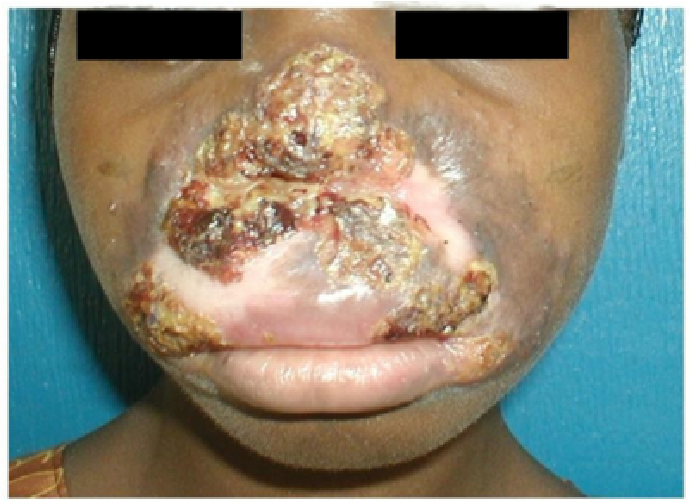Definition
Pulmonary tuberculosis (TB) is a lung infection caused by the bacterium Mycobacterium tuberculosis (MTB). TB remains a significant global health issue, with around 44% of cases occurring in Southeast Asia and 24% in Africa. In Indonesia, it is estimated that there are 845,000 TB cases, but only 543,874 cases were reported to the Ministry of Health as of March 2020. Although TB is rare in developed countries, the number of cases has increased with the rise in HIV/AIDS cases. In 1993, the United States implemented a stringent TB control program, but TB remains a persistent health problem.
Causes
TB is caused by the bacterium Mycobacterium tuberculosis (MTB). This bacterium can survive in low temperatures, is very sensitive to heat, can live in sputum for one week, and can become dormant.
MTB spreads from person to person through droplets released by an infected person when talking, sneezing, spitting, coughing, and laughing. Although it spreads through droplets, TB bacteria are not easily transmitted. Immune cells in the lungs can kill the bacteria that enter, and the respiratory system's cilia (fine hairs) help expel the bacteria. However, if the bacterial load is too high, the immune cells cannot completely eliminate the bacteria, which then multiply. Bacteria residing in the lungs will form a Gohn focus, causing inflammation as the body attempts to combat the bacterial invasion. This Gohn focus can heal completely without a trace, heal but leave a scar in the lungs, or spread to surrounding organs.
Risk factor
Risk factors for TB include:
- Compromised immunity. Patients with HIV/AIDS, diabetes, cancer, malnutrition, or undergoing cancer therapy are more susceptible to MTB infection due to weakened immunity.
- Age. Those at risk include children under 5 years old and the elderly.
- Smoking.
- Drug use. Injecting drugs and excessive alcohol use can weaken the immune system, making it easier to contract MTB.
- Living conditions. Poorly ventilated homes with little sunlight can be ideal environments for MTB to thrive.
- Living in high-risk places like prisons, refugee camps, or densely populated areas.
- Living with a TB patient.
- Working as a healthcare worker.
Symptoms
There are two terms related to TB that need to be understood:
- Active TB: An individual infected with MTB who exhibits TB symptoms.
- Latent TB: An individual infected with dormant MTB bacteria and shows no symptoms. Latent TB patients cannot transmit MTB to others but can develop active TB at any time, thus requiring treatment.
Not everyone infected with MTB will develop active TB. Symptoms of active TB include:
- Cough lasting 2 weeks or more.
- Coughing up blood.
- Chest pain and difficulty breathing.
- Unintentional weight loss.
- Persistent fatigue.
- Low-grade fever.
- Night sweats without physical activity.
- Loss of appetite.
MTB can also infect organs other than the lungs, such as lymph nodes, spine, and even the brain. Although most TB cases are pulmonary, symptoms related to other organs should also be monitored.
Diagnosis
When diagnosing TB, your doctor will consider your primary complaints, symptoms, and conduct a physical examination of your lungs, as well as additional tests. It's important to inform your doctor about your symptoms, medications you are currently taking, any contact history with TB patients, risk factors such as HIV/AIDS or diabetes, home conditions, BCG vaccination history, and any previous TB diagnoses and treatments. If you have been newly diagnosed with HIV/AIDS, or diabetes, or have been in close contact with TB patients, you will be screened for TB.
Your doctor will examine your lungs and lymph nodes around your neck during the physical examination.
TB diagnosis is confirmed through sputum examination. Your doctor will ask for specific samples of your sputum. These samples will be examined using an acid-fast bacillus (AFB) test or molecular rapid test (MRT), depending on available facilities. This test not only identifies MTB bacteria but also determines the type of MTB bacteria and its sensitivity to treatment. If necessary, a chest X-ray will be performed to assess lung condition.
Before prescribing medication, your doctor may conduct blood and organ function tests.
Sputum tests are also performed during treatment to monitor the medication's effectiveness, usually at the end of the second month, the fifth month, and the end of treatment.
Management
Treatment regimen
If the test results are positive, your doctor will prescribe TB medications based on your TB status and the sensitivity of the MTB bacteria to the treatment. Commonly used drugs include four antibiotics (Isoniazid, Rifampicin, Ethambutol, and Pyrazinamide). The number of tablets prescribed will depend on your body weight. Dosage adjustments will be made based on sputum test monitoring.
The treatment regimen typically lasts 6 consecutive months, with medications taken daily.
Side effects of medications
TB medications can cause side effects, including:
- Nausea and vomiting.
- Loss of appetite.
- Yellowing of the skin and eyes.
- Red urine.
- Vision disturbances.
Report these side effects to your doctor. Do not stop taking the medications without consulting your doctor.
Importance of adherence to treatment
TB medications must be taken for the full 6 months. After 2 months of treatment, TB patients usually feel much better and may want to stop the treatment. Stopping medication before 6 months or not taking it regularly is very dangerous as it does not completely eliminate the MTB bacteria. This can lead to complications, relapse, and an increased risk of developing drug-resistant TB, which is very dangerous.
Adherence to treatment is crucial. Your doctor may assign a Treatment Supervisor (PMO), a person close to you who ensures you take your medications regularly every day.
Complications
If untreated, pulmonary TB can cause severe complications, including:
- Infection with drug-resistant TB bacteria
- Lung collapse (pneumothorax)
- Hemoptysis (coughing up blood)
- Cance
- Destroyed lung
- Bronchiectasis
- MTB bacteria can also infect other organs, such as the spine (causing TB spondylitis) swelling of the meninges (meningitis), and venous thromboembolism.
Prevention
Prevention measures for TB include:
- Regular hand washing after activities and gatherings.
- Wearing a mask in public places.
- Maintaining body health through nutritious eating and physical activity.
- Quitting smoking, alcohol, and drug use.
- Getting the BCG vaccine as scheduled.
If your test results are positive for TB, whether latent or active, your doctor will prescribe a regimen of medications to be taken regularly for 6 months. Adhering to medication and attending health check-ups can help prevent the spread of bacteria to your surroundings. Regular medication intake also helps prevent drug-resistant TB (TB-MDR).
Protect your family and community by:
- Reducing contact with others until the 2nd month of treatment.
- Ensuring your home is well-ventilated and receives enough sunlight.
- Wearing a mask when going out, meeting people, laughing, or coughing.
- Disposing of used masks or tissues in plastic bags before discarding them.
- Practicing cough etiquette.
When to see a doctor?
See a doctor immediately if you experience a low-grade fever, cough lasting more than 2 weeks, weight loss, and night sweats. These symptoms indicate TB but can also be caused by other conditions. You should also see a doctor if you have been in contact with a TB patient to assess your current condition.
The Centers for Disease Control and Prevention (CDC) recommends TB screening for people at risk, including:
- Those with HIV/AIDS.
- Injection drug users.
- Those in contact with TB patients.
- People from regions with high TB prevalence, such as Southeast Asia, Latin America, and Africa.
- Residents of high-risk areas such as prisons, slums, and refugee camps.
- Healthcare workers.
- Children living with TB patients.
Looking for more information about other diseases? Click here!
- dr Anita Larasati Priyono
Kementerian Kesehatan Republik Indonesia. (2014). Pedoman nasional pengendalian tuberkulosis. Jakarta: Kementerian Kesehatan RI.
Kementerian Kesehatan Republik Indonesia. (2017). Pengobatan pasien tuberkulosis. Jakarta: Kementerian Kesehatan RI.
Peraturan Menteri Kesehatan Republik Indonesia Nomor 67 Tahun 2016 tentang Penanggulangan tuberkulosis.
Tuberculosis. (2021). MayoClinic. Available from: https://www.mayoclinic.org/diseases-conditions/tuberculosis/diagnosis-treatment/drc-20351256
World Health Organization (WHO). (2019). Global tuberculosis report 2019. Geneva: WHO.











